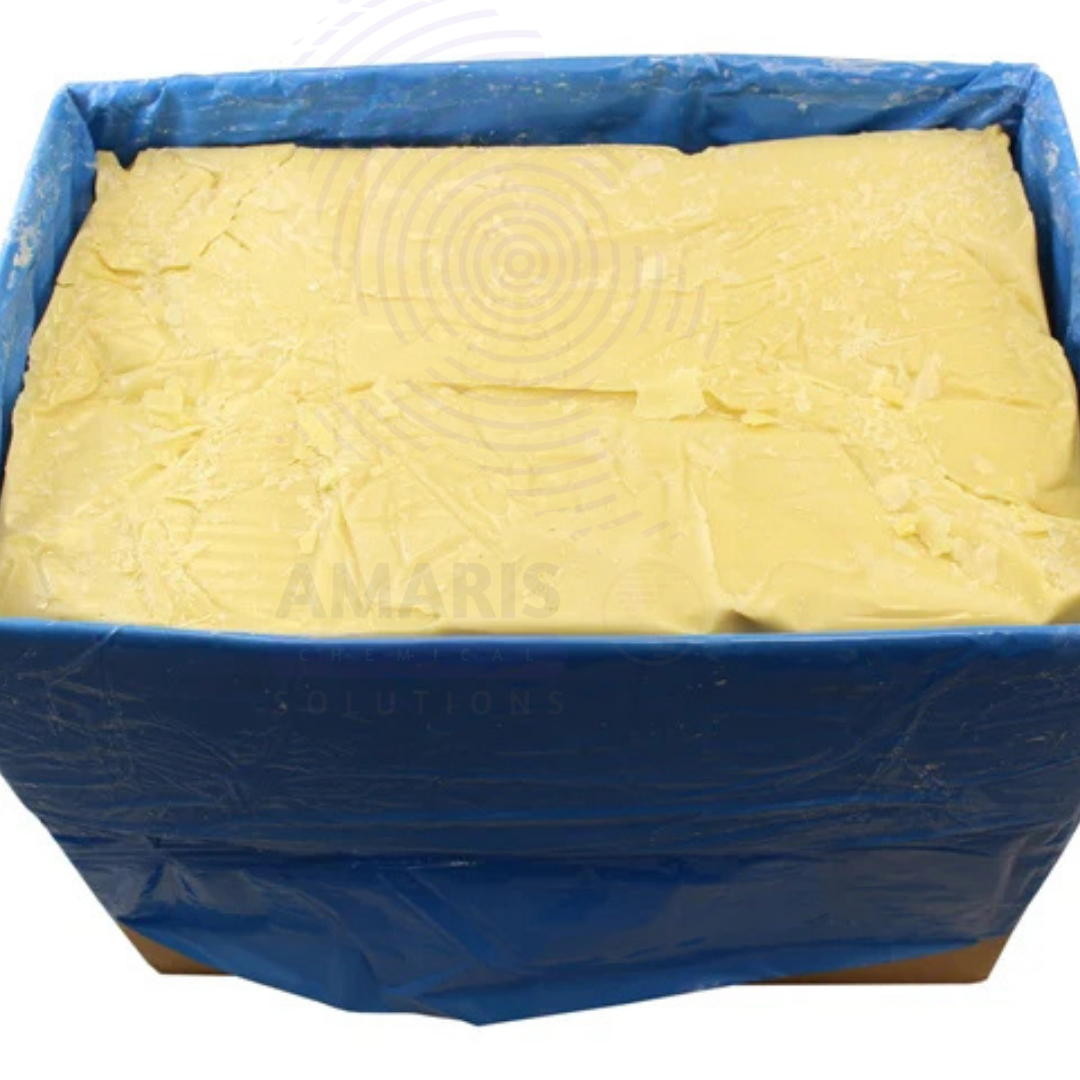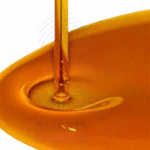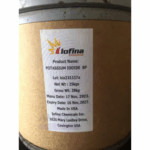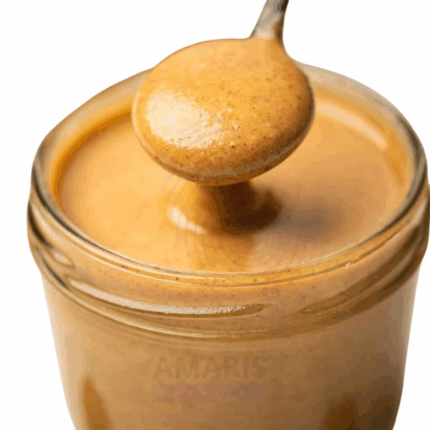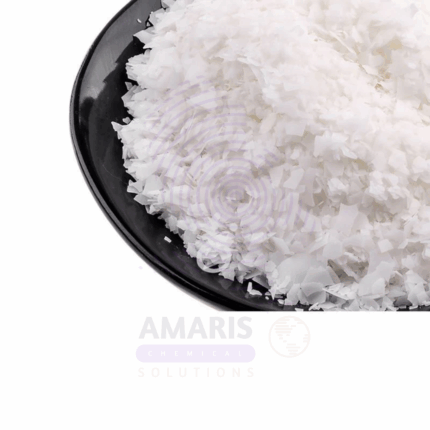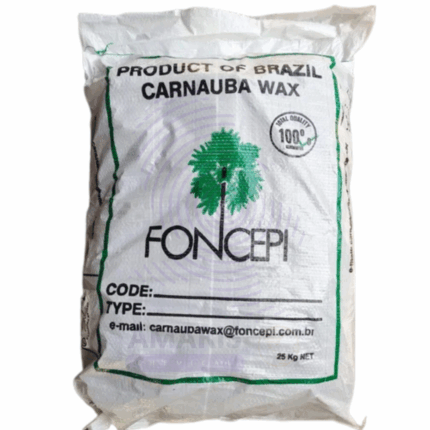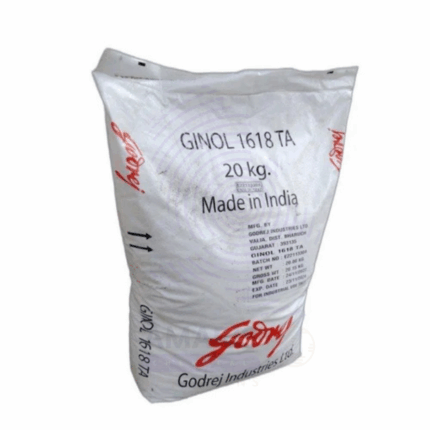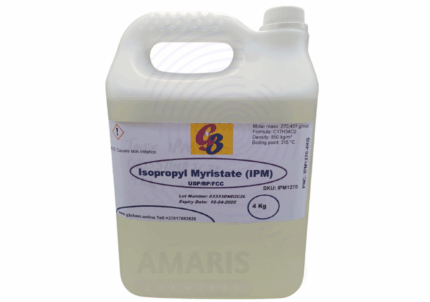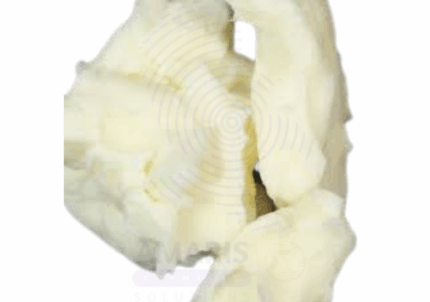Cocoa Butter
Cocoa Butter, also known as Theobroma oil, is a pale-yellow, edible fat extracted from cocoa beans, primarily from Theobroma cacao. It has a smooth, creamy texture and a mild, characteristic chocolate aroma. Cocoa Butter is solid at room temperature but melts near body temperature, which gives it a luxurious feel when applied to skin or consumed. It is highly valued for its emollient, moisturizing, and protective properties. Cocoa Butter is widely used in cosmetics, pharmaceuticals, food, and confectionery industries. Its stable composition rich in fatty acids such as stearic, palmitic, and oleic acids imparts excellent oxidative stability and a long shelf life.
Cocoa Butter
Primary Uses
- Cosmetics & Personal Care
- Used extensively in skincare products like lotions, creams, body butters, lip balms, and massage oils for its deep moisturizing and skin-softening properties.
- Functions as an emollient, creating a protective barrier that locks in moisture and helps soothe dry, cracked skin.
- Utilized in formulations aimed at stretch mark prevention and healing due to its ability to improve skin elasticity.
- Incorporated in hair care products such as conditioners and hair masks for its nourishing and anti-frizz benefits.
- Food Industry
- A key ingredient in chocolate production, providing smooth texture and glossy finish to chocolate bars and confectionery.
- Used in baking and confectionery as a stable fat with a distinctive flavor and melting profile.
- Employed as a fat component in dairy substitutes and spreads due to its neutral taste and melting behavior.
Secondary Uses
- Pharmaceuticals
- Used as a base for suppositories and topical ointments due to its melting characteristics and skin compatibility.
- Acts as a carrier fat in transdermal drug delivery systems.
- Candle Making
- Occasionally used in premium candles for its slow, even burn and pleasant aroma when heated.
- Massage Therapy
- Popular in therapeutic massage oils and balms for its glide and skin-conditioning effects.
- Aromatherapy
- Used as a carrier oil for essential oils in aromatherapy blends.
1. Basic Identification Attributes
- Chemical Name (IUPAC): Triglyceride of stearic and oleic acids (complex mixture)
- Common/Trade Name: Cocoa Butter
- CAS Number: 8002-31-1
- HS Code: 1804.00.10
- Molecular Formula: Variable triglyceride mixture (mainly C57H104O6)
- Synonyms:
- Theobroma oil
- Theobroma butter
- Cocoa fat
2. Physical & Chemical Properties
- Physical State: Solid fat (blocks or pellets)
- Color & Odor: Pale yellow to ivory; mild chocolate aroma
- Melting Point: 30–35°C (86–95°F)
- Boiling Point: Not applicable (decomposes)
- Density: ~0.92 g/cm³ at 20°C
- Solubility: Insoluble in water; soluble in organic solvents such as chloroform and ether
- Acid Value: Typically <2 mg KOH/g
- Iodine Value: 32–40 g I2/100g (degree of unsaturation)
- Stability: Highly stable to oxidation due to natural antioxidants (tocopherols)
3. Safety & Hazard Attributes
- Hazard Class (GHS): Not classified as hazardous
- NFPA Ratings:
- Health: 0
- Flammability: 1 (combustible fat)
- Reactivity: 0
- Exposure Limits: No established limits; generally recognized as safe
- Toxicity: Non-toxic, edible, and generally safe for topical use
- Reactivity: Stable under normal conditions
4. Storage & Handling Attributes
- Storage Conditions: Store in a cool, dry, and dark place away from heat and direct sunlight
- Container Type: Food-grade containers, barrels, or sealed bags
- Shelf Life: Up to 2 years if stored properly
- Special Handling: Avoid contamination; keep away from strong odors as it can absorb scents
5. Regulatory & Compliance Attributes
- FDA Status: GRAS (Generally Recognized as Safe) for food and cosmetic use
- REACH Status: Registered and compliant
- Transportation: Not classified as hazardous
- Waste Disposal: Biodegradable; dispose of according to local regulations
6. Environmental & Health Impact
- Ecotoxicity: Low environmental impact; biodegradable
- Persistence: Biodegradable under aerobic conditions
- Bioaccumulation: Not expected to bioaccumulate
- Carcinogenicity/Mutagenicity: Not classified as carcinogenic or mutagenic
- Biodegradability: Readily biodegradable
Safety Handling Precautions
Personal Protective Equipment (PPE):
- Gloves recommended for handling large quantities to avoid skin irritation from melting fat
- Protective eyewear when handling molten butter in processing
Handling Measures:
- Avoid prolonged skin contact with molten butter to prevent burns
- Use proper ventilation in manufacturing areas
Storage Measures:
- Keep container sealed to prevent contamination and rancidity
- Store in cool, dark place
Hygiene Practices:
- Wash hands after handling
- Do not eat or drink in handling area without washing hands
First Aid Measures
- Inhalation: Not applicable (non-volatile)
- Skin Contact: Cool with water if burns occur from molten butter; otherwise, wash skin thoroughly
- Eye Contact: Rinse with water if dust or particles enter eyes
- Ingestion: Safe if ingested; seek medical attention if allergic reaction occurs
Firefighting Measures
- Fire Hazards: Combustible fat; can catch fire under high heat
- Extinguishing Media: Use foam, dry chemical, or CO2 extinguishers
- Special Precautions: Avoid water jets which can spread burning fat
- Decomposition Products: May emit carbon oxides and other organic vapors when burned


 Preservatives(food)
Preservatives(food) Flavor Enhancers
Flavor Enhancers Acidulants
Acidulants Sweeteners
Sweeteners Antioxidants
Antioxidants Colorants(food)
Colorants(food) Nutraceutical Ingredients (food)
Nutraceutical Ingredients (food) Nutrient Supplements
Nutrient Supplements Emulsifiers
Emulsifiers
 Collectors
Collectors Dust Suppressants
Dust Suppressants Explosives and Blasting Agents
Explosives and Blasting Agents Flocculants and Coagulants
Flocculants and Coagulants Frothers
Frothers Leaching Agents
Leaching Agents pH Modifiers
pH Modifiers Precious Metal Extraction Agents
Precious Metal Extraction Agents
 Antioxidants(plastic)
Antioxidants(plastic) Colorants (Pigments, Dyes)
Colorants (Pigments, Dyes) Fillers and Reinforcements
Fillers and Reinforcements Flame Retardants
Flame Retardants Monomers
Monomers Plasticizers
Plasticizers Polymerization Initiators
Polymerization Initiators Stabilizers (UV, Heat)
Stabilizers (UV, Heat)
 Antifoaming Agents
Antifoaming Agents Chelating Agents
Chelating Agents Coagulants and Flocculants
Coagulants and Flocculants Corrosion Inhibitors
Corrosion Inhibitors Disinfectants and Biocides
Disinfectants and Biocides Oxidizing Agents
Oxidizing Agents pH Adjusters
pH Adjusters Scale Inhibitors( water)
Scale Inhibitors( water)
 Antioxidants(cosmetic)
Antioxidants(cosmetic) Emollients
Emollients Fragrances and Essential Oils
Fragrances and Essential Oils Humectants
Humectants Preservatives
Preservatives Surfactants(cosmetic)
Surfactants(cosmetic) Thickeners
Thickeners UV Filters
UV Filters
 Fertilizers
Fertilizers Soil Conditioners
Soil Conditioners Plant Growth Regulators
Plant Growth Regulators Animal Feed Additives
Animal Feed Additives Biostimulants
Biostimulants Pesticides (Herbicides, Insecticides, Fungicides)
Pesticides (Herbicides, Insecticides, Fungicides)
 Active Pharmaceutical Ingredients (APIs)
Active Pharmaceutical Ingredients (APIs) Excipients
Excipients Solvents(pharmaceutical)
Solvents(pharmaceutical) Antibiotics
Antibiotics Antiseptics and Disinfectants
Antiseptics and Disinfectants Vaccine Adjuvants
Vaccine Adjuvants Nutraceutical Ingredients (pharmaceutical)
Nutraceutical Ingredients (pharmaceutical) Analgesics & Antipyretics
Analgesics & Antipyretics
 Analytical Reagents
Analytical Reagents Solvents(lab)
Solvents(lab) Chromatography Chemicals
Chromatography Chemicals Spectroscopy Reagents
Spectroscopy Reagents microbiology-and-cell-culture-reagents
microbiology-and-cell-culture-reagents Molecular Biology Reagents
Molecular Biology Reagents Biochemical Reagents
Biochemical Reagents Inorganic and Organic Standards
Inorganic and Organic Standards Laboratory Safety Chemicals
Laboratory Safety Chemicals Specialty Laboratory Chemicals(Special Laboratory Equipment)
Specialty Laboratory Chemicals(Special Laboratory Equipment)
 Demulsifiers
Demulsifiers Hydraulic Fracturing Fluids
Hydraulic Fracturing Fluids Scale Inhibitors(oil)
Scale Inhibitors(oil) Surfactants(oil)
Surfactants(oil) Drilling Fluids
Drilling Fluids
 Dyes and Pigments
Dyes and Pigments Bleaching Agents
Bleaching Agents Softening Agents
Softening Agents Finishing Agents
Finishing Agents Antistatic Agents
Antistatic Agents
 Admixtures
Admixtures Waterproofing Agents
Waterproofing Agents Sealants and Adhesives
Sealants and Adhesives Curing Compounds
Curing Compounds Concrete Repair Chemicals
Concrete Repair Chemicals Anti-Corrosion Coatings
Anti-Corrosion Coatings
 Surfactants(cleaning)
Surfactants(cleaning) Builders
Builders Enzymes
Enzymes Solvents (Cleaning)
Solvents (Cleaning) Fragrances
Fragrances
 Electronic Chemicals
Electronic Chemicals Catalysts
Catalysts Lubricants
Lubricants Photographic Chemicals
Photographic Chemicals Refrigerants
Refrigerants Automotive chemicals
Automotive chemicals Pyrotechnic Chemicals
Pyrotechnic Chemicals
 Biodegradable Surfactants
Biodegradable Surfactants Bio-based Solvents
Bio-based Solvents Renewable Polymers
Renewable Polymers Carbon Capture Chemicals
Carbon Capture Chemicals Wastewater Treatment Chemicals
Wastewater Treatment Chemicals
 Pigments
Pigments Solvents(paint)
Solvents(paint) Specialty Coatings
Specialty Coatings Binders/Resins
Binders/Resins Additives
Additives Driers
Driers Anti-Corrosion Agents
Anti-Corrosion Agents Functional Coatings
Functional Coatings Application-Specific Coatings
Application-Specific Coatings
 Fresh Herbs
Fresh Herbs Ground Spices
Ground Spices Whole Spices
Whole Spices Spice Blends
Spice Blends Dried Herbs
Dried Herbs
 Leavening Agents
Leavening Agents Dough Conditioners
Dough Conditioners Flour Treatments
Flour Treatments Fat Replacers
Fat Replacers Decoratives
Decoratives Preservatives(baking)
Preservatives(baking)
 Plasticizers & Softeners
Plasticizers & Softeners Reinforcing Agents
Reinforcing Agents Adhesion Promoters
Adhesion Promoters Vulcanizing Agents
Vulcanizing Agents Antidegradants
Antidegradants Blowing Agents
Blowing Agents Fillers & Extenders
Fillers & Extenders Accelerators & Retarders
Accelerators & Retarders